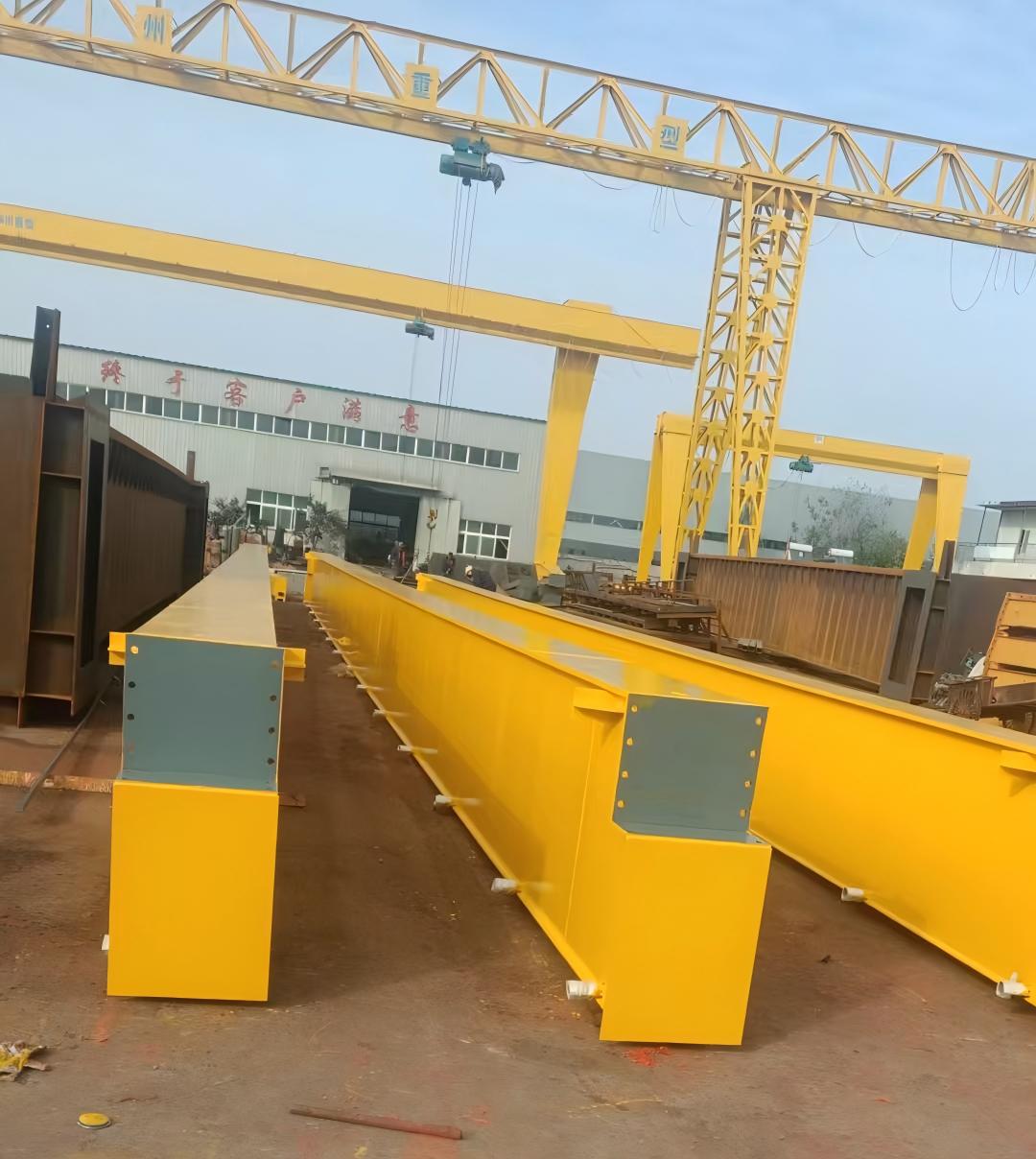
We have successfully delivered three 5-ton European Single Girder Overhead Cranes to a client in Indonesia, with spans of 22.5 meters and 24.5 meters. This solution addresses the client's need for precise material handling in a space-constrained facility.
Key Differences: European Cranes vs. Conventional LD Cranes
While conventional LD cranes are a common sight in many workshops, the European-style single girder crane offers distinct technological advantages for modern, high-efficiency operations. The key differences lie in their design philosophy and performance.
Optimized Structure & Space Utilization: European-style cranes feature a compact, low-headroom design. The hoist is integrated above the main girder, which maximizes the hook lift height under the same building conditions . In contrast, LD cranes have the hoist located below the girder, which consumes valuable headroom . This makes the European model ideal for facilities with height restrictions.
Drive System & Performance: European cranes employ closed-gear, hard-faced gear reducers that operate in accordance with stringent FEM standards . This results in smoother, quieter, and more reliable operation with less maintenance. Traditional LD drives often use open gear systems, which are noisier, less precise, and require more frequent maintenance .
Lightweight & Low Wheel Pressure: Through computer-optimized design, European cranes achieve high strength with reduced weight . This not only makes them more energy-efficient but also imposes lower wheel loads on the building's runway structure, potentially saving on construction costs .
Control and Precision: European cranes are often equipped with integrated motor drives ("three-in-one" drives) and Variable Frequency Drives (VFDs) for the hoist and travel motions . This allows for infinitely variable speeds, soft starts, and stops, enabling precise load positioning—a critical feature for delicate and large component assembly.
European single girder cranes are an effective solution for:
Precision material handling (e.g., production line feeding).
Precise assembly of large components.
Workshops with limited headroom that require maximum hook height.
Facilities aiming to reduce long-term equipment maintenance costs.
Case Study: Gaining Lift Height Without Building Modifications
An Indonesian factory needed to upgrade its equipment but was constrained by its existing building height. Their conventional LD crane did not provide sufficient lift height.
The Problem with the LD Crane: The workshop runway height was 5.5 meters. The 5-ton LD crane offered an effective hook lift height of only 3.46 meters, which was inadequate.
The European Crane Solution: A 5-ton European low-headroom crane was installed on the same 5.5-meter runway. It provided an effective lift height of 3.94 meters.
The Result: The client gained 480 mm of additional lift height. This allowed for the installation of new equipment without costly structural modifications to the building, resolving the production upgrade challenge directly.

Name: Henan Hengkun Crane Co.,Ltd
Mobile:+8617260676687
Tel:+8617260676687
Whatsapp:8617260676687
Email:info@hengkuncranes.com
Add:3K-008, Building B5, No. 299 Xindong Avenue (South), Hongqi District, Xinxiang city, Henan Province
We chat

We chat
